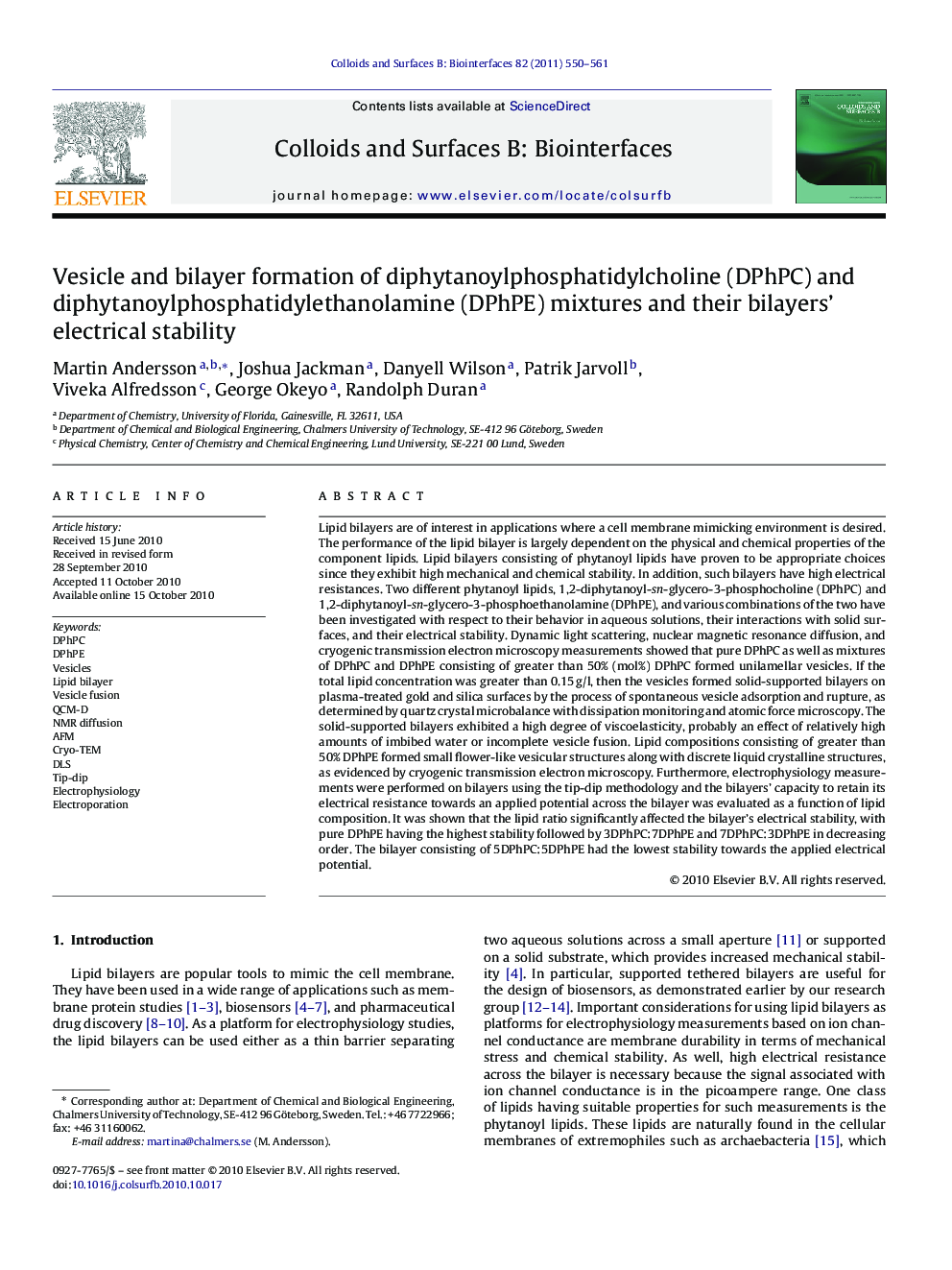| کد مقاله | کد نشریه | سال انتشار | مقاله انگلیسی | نسخه تمام متن |
|---|---|---|---|---|
| 601351 | 879939 | 2011 | 12 صفحه PDF | دانلود رایگان |

Lipid bilayers are of interest in applications where a cell membrane mimicking environment is desired. The performance of the lipid bilayer is largely dependent on the physical and chemical properties of the component lipids. Lipid bilayers consisting of phytanoyl lipids have proven to be appropriate choices since they exhibit high mechanical and chemical stability. In addition, such bilayers have high electrical resistances. Two different phytanoyl lipids, 1,2-diphytanoyl-sn-glycero-3-phosphocholine (DPhPC) and 1,2-diphytanoyl-sn-glycero-3-phosphoethanolamine (DPhPE), and various combinations of the two have been investigated with respect to their behavior in aqueous solutions, their interactions with solid surfaces, and their electrical stability. Dynamic light scattering, nuclear magnetic resonance diffusion, and cryogenic transmission electron microscopy measurements showed that pure DPhPC as well as mixtures of DPhPC and DPhPE consisting of greater than 50% (mol%) DPhPC formed unilamellar vesicles. If the total lipid concentration was greater than 0.15 g/l, then the vesicles formed solid-supported bilayers on plasma-treated gold and silica surfaces by the process of spontaneous vesicle adsorption and rupture, as determined by quartz crystal microbalance with dissipation monitoring and atomic force microscopy. The solid-supported bilayers exhibited a high degree of viscoelasticity, probably an effect of relatively high amounts of imbibed water or incomplete vesicle fusion. Lipid compositions consisting of greater than 50% DPhPE formed small flower-like vesicular structures along with discrete liquid crystalline structures, as evidenced by cryogenic transmission electron microscopy. Furthermore, electrophysiology measurements were performed on bilayers using the tip-dip methodology and the bilayers’ capacity to retain its electrical resistance towards an applied potential across the bilayer was evaluated as a function of lipid composition. It was shown that the lipid ratio significantly affected the bilayer's electrical stability, with pure DPhPE having the highest stability followed by 3DPhPC:7DPhPE and 7DPhPC:3DPhPE in decreasing order. The bilayer consisting of 5DPhPC:5DPhPE had the lowest stability towards the applied electrical potential.
Figure optionsDownload as PowerPoint slideResearch highlights▶ Mixtures of (DPhPC) and (DPhPE) formed lipid bilayers on hydrophilic surfaces. ▶ The bilayer formation on solid supports was concentration dependent. ▶ The formed lipid bilayers had high viscoelasticity. ▶ No supported bilayers could be formed from solutions containing more than 50% DPhPE. ▶ The electrical stability of the bilayers was dependent on the lipid composition.
Journal: Colloids and Surfaces B: Biointerfaces - Volume 82, Issue 2, 1 February 2011, Pages 550–561